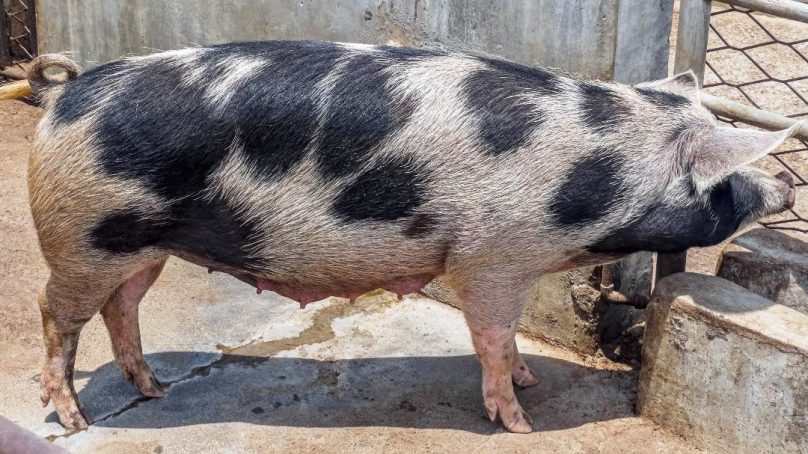
Kenya’s livestock agency steps up pig breeding to meet demand for piglets as pork consumption spikes
Agriculture has long been touted as the backbone of Kenya`s economy. However, diversity and innovation in this key sector of the economy has not matched with the rising demand for food and other non-food aspects like employment and industrial raw material.
One subsector that is yet to realise full potential is pig-farming. It`s estimated that consumption of pork in Kenya is set to rise to 17,100 metric tonnes in 2026, growing at a rate of one per cent per year since 2021.
Kenyans consume approximately 0.4 kilogrammes of pork per person annually. This translates to about 400 tonnes of pork consumed annually in the country. Although the demand for pork is said to be rising, it remains a smaller portion of Kenyans’ overall meat consumption compared to beef and mutton.
Indeed, the rising pork demand and its products is said to be pushing more and more farmers into the country to venture into pig farming.
Data from the Ministry of Agriculture, Livestock Development and Fisheries also shows that as of 2017, the country’s animal population comprised 44.6 million poultry, 18.8 million cattle, 26.7 million goats, 18.9 million sheep, 3.2 million camels, 1.9 million donkeys and 0.5 million pigs, which contributed 4.4 per cent of the gross domestic product in the same year. But these figures are said to have gone higher in 2025 which is eight years later.
According to Food and Agriculture Organisation (FAO), Kenya’s beef production stands at 588,000 metric tonnes and cow milk production at 4.1 billion litres per year and the demand for livestock products is projected to increase exponentially driven by population growth by the year 2050.
The study titled Future of Livestock in Kenya 2019 shows that by the year 2050, meat and cow milk consumption will increase by 1.4 and 6.6 million metric tonnes annually respectively.
Consequently, the government and stakeholders are working together to increase the productivity of the livestock sector to meet the demand for meat and other livestock products. One of the sub-sectors of the livestock sector whose demand has been growing is the pig farming sub-sector.
Data from the aforementioned ministry shows that in 2023, Kenya produced 40,055 tonnes of pork, derived from 840,160 pigs. This translated to a revenue of Ksh19.5 billion. In the year 2020, records indicate that 25,800 metric tonnes of pork was produced, the highest level that nearly matches the 26,000 metric tonnes of pork realised in 2015.
It`s in this regard that the Kenya Agricultural and Livestock Research Organization (KALRO) through its affiliate the Dairy Training Institute (DTI) in Naivasha has heightened its research and production of better and quality breeds of pigs.
The head of pig rearing section at Naivasha Dairy Institute Mr McDonald Githinji says so far the institute has researched and come up with four main breeds of pigs which they are now recommending to the farmers for better productivity.
They include Large White (Yorkshire), which is known for high-quality meat, Landrace (known for their large sizes hence more meat products), Duroc which is a breed that grows fast growth and high meat yield per animal and Hampshire which is said to be a strong and hardy breed.
Githinji says the demand for piglets is growing rapidly in the country as farmer’s eye quality pig-lets breeds that yield high return in just a few months. He says the new breeds of piglets mature in four to six months at a weight of approximately 130 kilogrammes and are ready for sale to farmers whose numbers continue to rise driven by high demand for pork.
This is unlike the earlier breeds which can take up to nine months to mature and have lower weight. Githinji says proper feeding ensures pigs attain the desired market weight for slaughter which in turn enhances financial returns for farmers.
He said with proper feeding, a mature pig can fetch between Ksh15, 000 and Ksh20,000 in the market and after deduction of cost of production, a farmer can make up to Ksh7,000 per mature pig. Githinji advises farmers to turn to pig farming to help meet the demand in the market and maximise their profits margins.
He adds that demand for pork and pork products such as sausages and bacon continues to rise among Kenyans with more people who previously did not consume them, now embracing these delicacies. This demand has led to an increases in the demand for well-fed pigs in the market which translates to more weight, better quality and in turn, higher profits.
Currently, major towns across central region, Nairobi, Nakuru, Kiambu has registered growing markets for pork and has seen business in pork products in these areas booming.
“Pig Farming is a profitable venture that the youths need to embrace as demand for pork and its products continues to rise especially among the urban dwellers across the country,”
Githinji explains that pig farming does not require a large spaces and therefore farmers can utilize even small spaces at the back of the house to rear these animals.
The intensive system allows for rearing pigs in a controlled environment (pig housing) where farmers can maximize production in a small space. Due to the small spaces needed, the production per animal is ta optimum and hence, higher returns for farmers.
Githinji reveals that the institute plans to expand its pig breeding facility from the current production of 80 piglets to 200 per month in order to meet the market demand. He says they target to supply 2,000 piglets by end this year as market demands go higher and higher.
Githinji says farmers are facing high cost of pig feed and this is among the major challenge facing this venture. This is due to scarcity of feeds-making raw materials in the local market to meet the increased needs for feeds.
“This has seen manufactures turn to importation of these raw materials such as cotton or sunflower cake among others which has in turn driven up the cost of feeds.
The move has seen a section of farmers turn to feeding low nutritional materials as well as street rearing of the animals, which in turn lowers their returns and exposes animals to diseases. To address this, Githinji says the institute advises farmers to produce home grown supplements that combines key nutritional feeds ingredients to make feeds.
But he says the breeds produced by KALRO consume less feeds and therefore feeding the animals at the right time with the right quantity can eventually lower the cost of production.
The sector contributes about 30 per cent of the gross domestic product (GDP) and accounts for 80 per cent of national employment, mainly in the rural areas. The sector provides employment to a significant number of Kenyans, with some estimates indicating that over 70 per cent of rural people depend on agriculture for employment.
The livestock sector in agriculture is a significant pillar of Kenya’s economy, contributing approximately 12 per cent to the national gross domestic product (GDP) and accounts for about 42 per cent of the agricultural GDP.
Data from the same ministry shows that in 2023, Kenya earned approximately Ksh190.5 billion from livestock production, including livestock products, which is roughly $1.5 billion. Cattle and calves alone contributed Ksh112.7 billion (some $870 million) to this total.
- A Tell Media / KNA report / By Mabel Keya-Shikuku








